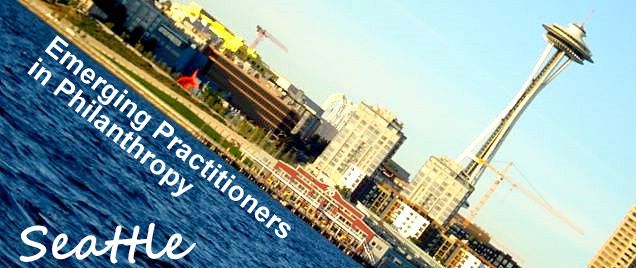In preparation for EPIP Seattle's upcoming Careers in Philanthropy luncheon, we are posting blog entries by our guest, Richard Woo, CEO of The Russell Family Foundation. Register now for the 10/27 luncheon - space is limited!
Recently on Whidbey Island, Washington I had occasion to walk a labyrinth carved with stones into a grassy meadow on the grounds of the Whidbey Institute. Here are some reflections from that walking meditation.As I walked the labyrinth, I noticed I was only able to relax my muscles for two to three steps before becoming aware of the creeping hunch of my shoulders and neck. Again, I would let the muscles drop for a few more steps before unconsciously tensing.I realized that part of the tension was caused by the weight of my head pitched over my toes concentrating on each footstep through the stone-lined path of the labyrinth. This was how I had walked the labyrinth during my first visit—head down, eyes glued to the path, concentrating on a decidely inner experience.As an experiment, I lifted my head and cast my eyes out beyond my immediate path to the landscape surrounding the stones. As I did so, I felt the tension lessen in my shoulders. I was less certain of my footsteps but accepted that I could trust my agility to recover from any misstep. With my head raised and eyes aimed far forward, I found myself concentrating on a wider and deeper peripheral view in order to help navigate the foot path. I began taking notice of the bare trees, sloping hill and gray sky around me, rather than the individual stones and trampled grass at my feet.It struck me that this way of seeing the world was a simple metaphor for two joys in my life: 1) downhill skiing, and 2) my work.I have skied since my teens and I am still trying to break through to new skill levels. I noticed some time ago that I ski much better when I look my way down the hill with my vision directed 20 feet ahead, rather than nervously watching the front tips of my skis. Watching those ski tips comes from fearing whatever bumps or turns are right under me. This is caused by the occasional uncertainty of my abilities—the kind of tedious micro-managing you might do at work, if you didn’t trust that others could do as well.But skiing in this micro-managed way is counter productive. The fact is, I am moving so fast downhill that whatever obstacle is at my ski tips is already too far gone to anticipate. It also means I’m not seeing far enough ahead to self-correct for the bump that I actually can do something about. So in fact, keeping a short view is self-defeating, when the broader, long view is what is required. If I ski with the long view and trust that my body and knees will intuitively adjust “up, down or sideways” for what immediately arises, I am better able to cruise the mountain and enjoy the scenery!Hmmmmm, short view and long view, that brings me to that second joy—my work. While it’s often easy and seductive to surrender to the short view at work such as ticking off boxes from the daily To Do List or scrolling through endless emails—that is the equivalent of “watching my ski tips.” Ultimately, I am better served by the strategic long view. My primary role in the organization is to keep my head up, eyes forward and pay attention to the changing landscape—trusting that my capable colleagues will use their intelligence and agility to negotiate the immediate obstacles and opportunities that arise. With a balanced team approach, the foundation is better able to meet the daily demands of grantmaking, while anticipating the evolution of our communities.What mysteries are revealed in the labyrinth.
.jpg)

1 comment:
Nice post Heather.
Well done,
Lawrence
Post a Comment